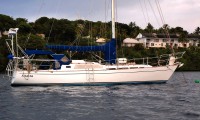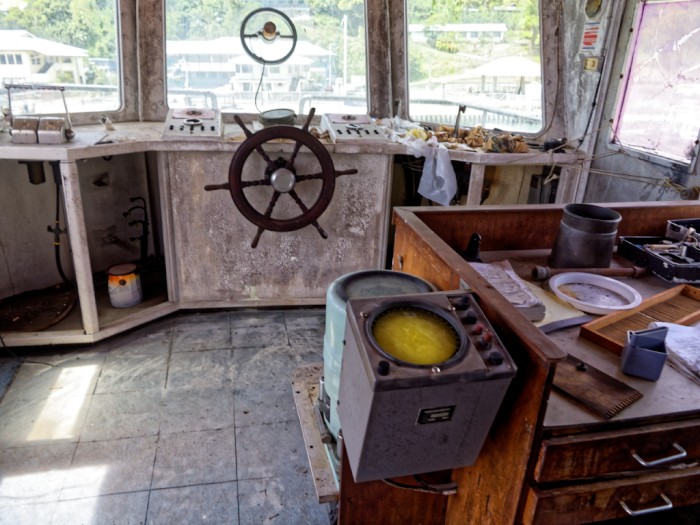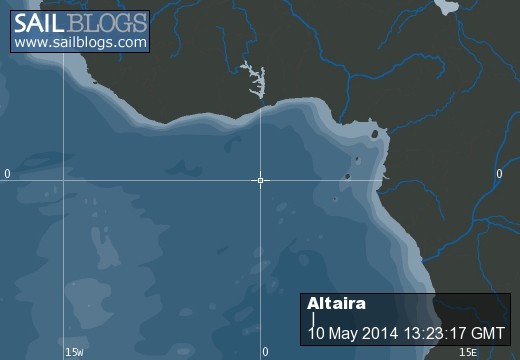Profile

Who: Kimball Corson. Text and Photos not disclaimed or that are obviously not mine are copyright (c) Kimball Corson 2004-2016
Port: Lake Pleasant, AZ
Altaira Wandering the Oceans
Favorites
- 7 Seas Cruising Association
- American Sailing Association
- Buoyweather Service
- CDC Traveler's Heath Advisories
- Cruiser Log venue
- Cruisers Forum
- Cruising Club of America
- Cruising Resources
- Cruising World Magazine
- Earthrace World Record
- Economic and Financial Indicators
- Economist Magazine
- Equipmment and Boat Reviews
- Float Plan Form
- Greenpeace Int'l
- Grib File Access
- Heavy Weather Sailing
- IMS Certificates
- Inland Travel: Expedia
- Intrade Prediction Markets
- Latitude 38
- London Financial Times
- Marine Books and Charts
- Marine Radios
- Nature Conservancy for Oceans
- New York Times
- NOAA Hurricane Analysis
- NOAA Weather Forecasts
- Noonsite, World Cruisng Info
- Ocean Cruising Club
- Overseas Mail Forwarding Services
- Practical Sailor Magazine
- RGE Economic Monitor
- Sail Gear Source I
- Sail Gear Source II
- Sail Gear Source III
- Sail Gear Source IV
- Sailboat Selection for Offshore Use
- Sailboats for Sale
- Sailing Items Sources Links
- SailMail (Marine Radio)
- Sailnet Sailing Information
- Seeking Alpha
- Tide & Current Program
- Tide Prediction Programs
- Tides & Currents
- TruthDig in the News
- U.S. Sailing Association
- Univ of Chicago Law Faculty Blog
- US State Dept Travel Advisories
- Voyage Planning (with pilot charts)
- Wall Street Journal
- Washington Post
- Weather.com
- Weather: MagicSeaweed
- Weather: Wetsand
- WinLink (Ham Radio)
- World Clock + Time Zones
09 April 2018 | Pago Pago, American Samoa
10 March 2018 | Pago Pago, American Samoa
10 March 2018 | Pago Pago, American Samoa
10 March 2018 | Pago Pago, American Samoa
22 August 2017 | Pago Pago, American Samoa
22 August 2017 | Pago Pago, American Samoa
22 August 2017 | Pago Pago, American Samoa
22 August 2017 | Pago Pago, American Samoa
22 August 2017 | Pago Pago, American Samoa
22 August 2017 | Pago Pago, American Samoa
22 August 2017 | Pago Pago, American Samoa
22 August 2017 | Pago Pago, American Samoa
22 August 2017 | Pago Pago, American Samoa
22 August 2017 | Pago Pago, American Samoa
22 August 2017 | Pago Pago, American Samoa
22 August 2017 | Pago Pago, American Samoa
22 August 2017 | Pago Pago, American Samoa
22 August 2017 | Pago Pago, American Samoa
22 August 2017 | Pago Pago, American Samoa
09 August 2017 | Pago Pago, American Samoa
Basic Monetary Economics, Expanded
19 November 2016 | Pago Pago, American Samoa
Kimball Corson

The purchases of our federal government are based on our full faith in the credit of the United States (often mis or summarily stated as the full faith and credit of the United states). That is why people accept government checks in payment for whatever. Not because there are tax dollars and bond revenues in some government accounts somewhere to back those payments.
The credit of the US is taken on full faith. It need not be tied at all to any such account balances except to the extent someone or some group decides that must be so. Indeed, there is slippage. Much slippage. Tax payments in cash are destroyed. The government even uses government credit cards. The truth is it need only write a check on its own good credit in lieu of anything else. Most don't understand this.
Indeed, the government need not sell bonds to raise money. It can simply trade on its own good credit without running up debt to obtain the goods, services and "transfers" it seeks. Most don't get this, but it is already what the government substantially does in part.
Most government payments and checks are indeed issued and accepted on our good faith in the credit of the United States. The money introduced into circulation by that means arises because that credit of the sovereign is permitted to move into commerce as money approved as such by the federal reserve and allowed to be bank reserves. Banks have a franchise to create money by issuing credit, but it is not exclusive. The sovereign uses its credit to the same end. The Fed doesn't deal in credit but directly can create money.
Most people confuse money and credit and do not understand this basic monetary theory. Money baffles most people. They see it only as a means of making purchases and as a store of value and they focus on finance instead, thinking that is what monetary economics is about. I had the good fortune to learn much about money, but not MMT, in my PhD program under Milton Friedman at the University of Chicago and a bit from going through the law school there, too. That made MMT quick and easy to learn for me.
The resistance to and fear of MMT is too many think there is no limitation on the use of the credit of the United States if it is freed from the tally of tax and bond revenues, but again this is a failure, in my view, to understand economics and incipient inflation, easily controlled by raising taxes.
The volume of cash and near cash hoarding in the United States by the rich, the wealthy and the corporations they control -- a concomitant of excessive income and wealth inequality -- largely assures that the likely problem is much more the prospect of deflation rather than inflation.
Income not spent on current consumption or current real investment, due to high liquidity preferences, but held as cash or as near cash in secondary stock and bond markets is money or value hoarded. Hoarded money and near money, as Keynes well understood, breaches Say's Law (output = income) and creates deficient aggregate demand and sometimes slack investment. The Fed has had to increase the money supply hugely by QE and other means to compensate for the collapse in the velocity of money due to this hoarding.
But again, the real limitation is inflation which is not a problem in such an environment, especially with such huge numbers not in the labor force (some 90 to 94 million adults) and so many other idle resources in the United States.
The credit of the US is taken on full faith. It need not be tied at all to any such account balances except to the extent someone or some group decides that must be so. Indeed, there is slippage. Much slippage. Tax payments in cash are destroyed. The government even uses government credit cards. The truth is it need only write a check on its own good credit in lieu of anything else. Most don't understand this.
Indeed, the government need not sell bonds to raise money. It can simply trade on its own good credit without running up debt to obtain the goods, services and "transfers" it seeks. Most don't get this, but it is already what the government substantially does in part.
Most government payments and checks are indeed issued and accepted on our good faith in the credit of the United States. The money introduced into circulation by that means arises because that credit of the sovereign is permitted to move into commerce as money approved as such by the federal reserve and allowed to be bank reserves. Banks have a franchise to create money by issuing credit, but it is not exclusive. The sovereign uses its credit to the same end. The Fed doesn't deal in credit but directly can create money.
Most people confuse money and credit and do not understand this basic monetary theory. Money baffles most people. They see it only as a means of making purchases and as a store of value and they focus on finance instead, thinking that is what monetary economics is about. I had the good fortune to learn much about money, but not MMT, in my PhD program under Milton Friedman at the University of Chicago and a bit from going through the law school there, too. That made MMT quick and easy to learn for me.
The resistance to and fear of MMT is too many think there is no limitation on the use of the credit of the United States if it is freed from the tally of tax and bond revenues, but again this is a failure, in my view, to understand economics and incipient inflation, easily controlled by raising taxes.
The volume of cash and near cash hoarding in the United States by the rich, the wealthy and the corporations they control -- a concomitant of excessive income and wealth inequality -- largely assures that the likely problem is much more the prospect of deflation rather than inflation.
Income not spent on current consumption or current real investment, due to high liquidity preferences, but held as cash or as near cash in secondary stock and bond markets is money or value hoarded. Hoarded money and near money, as Keynes well understood, breaches Say's Law (output = income) and creates deficient aggregate demand and sometimes slack investment. The Fed has had to increase the money supply hugely by QE and other means to compensate for the collapse in the velocity of money due to this hoarding.
But again, the real limitation is inflation which is not a problem in such an environment, especially with such huge numbers not in the labor force (some 90 to 94 million adults) and so many other idle resources in the United States.
Comments
| Vessel Name: | Altaira |
| Vessel Make/Model: | A Fair Weather Mariner 39 is a fast (PHRF 132), heavily ballasted (43%), high-aspect (6:1), stiff, comfortable, offshore performance cruiser by Bob Perry that goes to wind well (30 deg w/ good headway) and is also good up and down the Beaufort scale. |
| Hailing Port: | Lake Pleasant, AZ |
| Crew: | Kimball Corson. Text and Photos not disclaimed or that are obviously not mine are copyright (c) Kimball Corson 2004-2016 |
| About: | |
| Extra: |
Altaira's Photos - Main
No items in this gallery.
Profile

Who: Kimball Corson. Text and Photos not disclaimed or that are obviously not mine are copyright (c) Kimball Corson 2004-2016
Port: Lake Pleasant, AZ
Altaira Wandering the Oceans
Favorites
- 7 Seas Cruising Association
- American Sailing Association
- Buoyweather Service
- CDC Traveler's Heath Advisories
- Cruiser Log venue
- Cruisers Forum
- Cruising Club of America
- Cruising Resources
- Cruising World Magazine
- Earthrace World Record
- Economic and Financial Indicators
- Economist Magazine
- Equipmment and Boat Reviews
- Float Plan Form
- Greenpeace Int'l
- Grib File Access
- Heavy Weather Sailing
- IMS Certificates
- Inland Travel: Expedia
- Intrade Prediction Markets
- Latitude 38
- London Financial Times
- Marine Books and Charts
- Marine Radios
- Nature Conservancy for Oceans
- New York Times
- NOAA Hurricane Analysis
- NOAA Weather Forecasts
- Noonsite, World Cruisng Info
- Ocean Cruising Club
- Overseas Mail Forwarding Services
- Practical Sailor Magazine
- RGE Economic Monitor
- Sail Gear Source I
- Sail Gear Source II
- Sail Gear Source III
- Sail Gear Source IV
- Sailboat Selection for Offshore Use
- Sailboats for Sale
- Sailing Items Sources Links
- SailMail (Marine Radio)
- Sailnet Sailing Information
- Seeking Alpha
- Tide & Current Program
- Tide Prediction Programs
- Tides & Currents
- TruthDig in the News
- U.S. Sailing Association
- Univ of Chicago Law Faculty Blog
- US State Dept Travel Advisories
- Voyage Planning (with pilot charts)
- Wall Street Journal
- Washington Post
- Weather.com
- Weather: MagicSeaweed
- Weather: Wetsand
- WinLink (Ham Radio)
- World Clock + Time Zones
